Visit OTTO for a Lynq PRO™ Demonstration: SOFIC Booth 2128
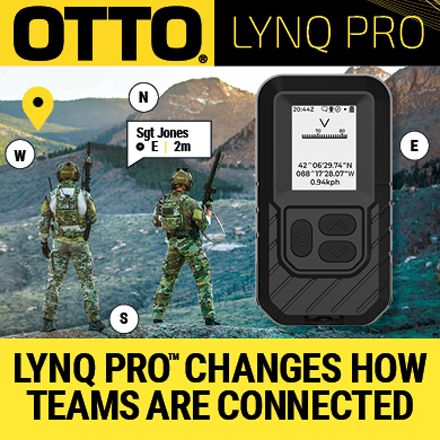
Capable of functioning stand-alone as a next-gen battlefield tracking solution, Lynq PRO™ augments ATAK EUDs with secure LPI/LPD transmissions and the ability to establish a common operating picture in multidomain operations. Personnel and unmanned systems can infiltrate contested environments against near-peer adversaries without detection and locate active or incapacitated teammates.
Need to meet a demand on the fly? Lynq PRO™ Deployment Kits help users create mission profiles to match the requirement. Using the included Raspbery Pi, operators can pair devices in groups, naming devices and groups separately, and deploy mission data en mass. Further, operators can issue secure keys on demand for unbreakable encryption.
![]()
Lynq PRO™ Deployment Kits support a multitude of use cases, including remote advise and assist, where operators issue Lynq PRO™ to local forces with selective features enabled — allowing operators to track, navigate, and communicate with locals, while their position remains unknown to the local forces. This provides security and strategic advantage — as well as unprecedented communication, tactics, and performance with local forces.
Operators can also track equipment, like motorcycles and other assets involved in jumps where bundles need their own parachute. Operators can use Lynq PRO™ to find their landed assets in the field by navigating to those devices — i.e., Bravo Six can navigate to “Bravo Six Bike” from within the Lynq PRO™ menu natively, no need to even use an ATAK EUD.
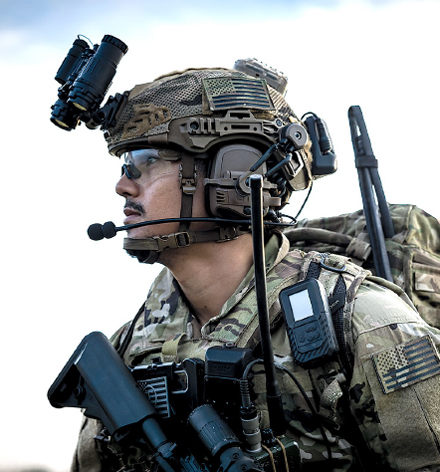
In comms denied or comms dark operations, where other comms are too noisy or unavailable, Lynq PRO’s 1W radio provides extended comms range for persistent positioning, navigation, and timing. Operators can maintain contact with each other via Lynq PRO’s self-forming network over broad areas, allowing for communication and navigation, without the need for ATAK, radio, or GPS.
This makes Lynq PRO™ perfect for remote advise and assist: Operators can issue Lynq PRO™ to local forces with selective features enabled, allowing operators to track, navigate, and communicate with locals, while our operators position remains unknown to the local forces. This provides security and strategic advantage – as well as unprecedented communication, tactics, and performance with local forces.
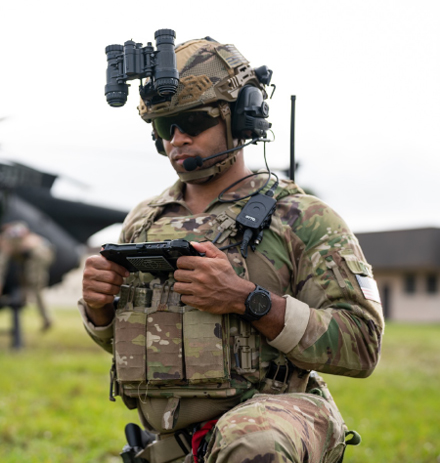
While deployed, Operators can push new waypoints and objectives to local forces on demand, without the need to regroup or communicate via radio. After issuing new waypoint information and instructions, Operators can monitor the movement of local forces via Lynq PRO™ or a connected ATAK EUD, ensuring locals are performing and increasing coordination and mission success probability.
Training exercises realize significant benefits with the addition of Lynq PRO™ for:
- Personnel tracking
- Command can monitor the movement of trainees in the field, without the need for additional radio, GPS, or ATAK devices.
- Man down
- An injured trainee in the field, without a radio or cell phone, can use Lynq PRO™’s built-in messaging to alert command to their injury. Command can use the persistent navigation and location of Lynq PRO™ to locate and render aid to trainee.
- Man unresponsive
- A non-mobile, non-communicating trainee is a potentially an injured and unresponsive trainee. Lynq PRO™ maintains a persistent messaging channel and location marker for all units. Command can use the messaging feature to attempt communication with the trainee to determine cause of stationary behavior. If unresponsive, command can use the persistent navigation and location of Lynq PRO™ to locate and render aid.
- Performance evaluation
- In landnav exercises, command can issue Lynq PRO™ to trainees with trainee navigation feature disabled. This allows command to track trainee performance, while denying the navigational abilities of Lynq PRO™ to the trainee. Command’s ability to communicate and navigate to the trainee remains intact for locating and rendering aid if necessary.
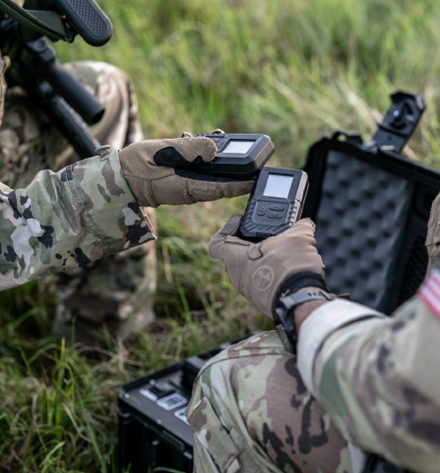
Lynq PRO™ provides hardware redundancy as a single-hardware unit doing the work of what has traditionally been three or more devices: radio, GPS, ATAK EUD. Lynq PRO™ augments these capabilities by extending an ATAK network to individuals that don’t necessarily need a radio or EUD, but can benefit the fighting force with location tracking, navigation, and messaging. These data points and abilities provided by Lynq PRO™ create an enhanced battlefield IQ for fighting forces, without the need and expense of deploying triple the equipment at a massive cost.
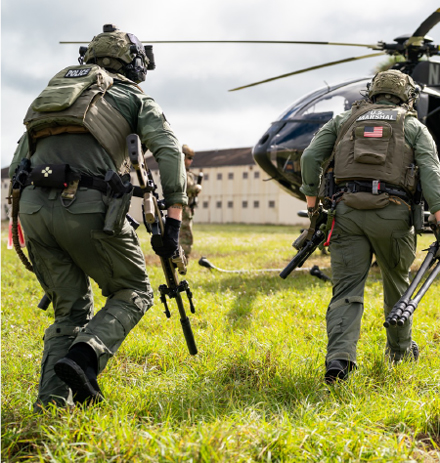
Perfect for joint- and multi-agency operations, Lynq PRO helps overcome comms incompatibilities when combining resources from state, local, and federal agencies – as even neighboring cities and counties often have diverse comms infrastructure. Lynq PRO™ succeeds where others fail bringing messaging features, as well as providing location awareness and navigational capabilities – allowing a diverse group of agencies to be more connected and communicative than ever before, with minimal investment and training.
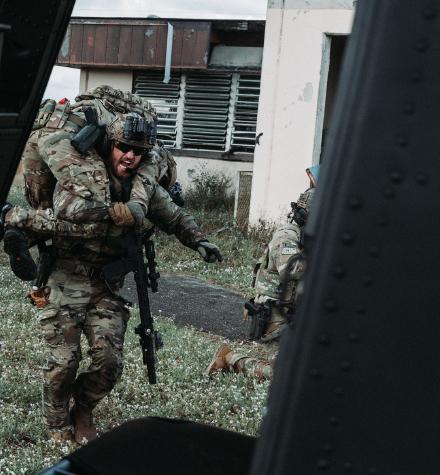
Lynq PRO™ works outside the military environment, allowing the benefits of persistent position, navigation, and timing to aid in wildland firefighting and search and rescue (SAR) operations. Using these abilities, firefighters and SAR teams can coordinate efforts, assist in man-down and rescue operations, and maintain a constant perspective on personnel position in the field.
Plus, Lynq PRO™ is designed for the future and is firmware upgradeable. As features develop, new capabilities are deployed via firmware update to enhance the capabilities of Lynq PRO™ for your teams. Overall, changing the way teams connect and share secure peer-to-peer location, data, and critical information for miles without networks or infrastructure, Lynq PRO™ is a force multiplier.
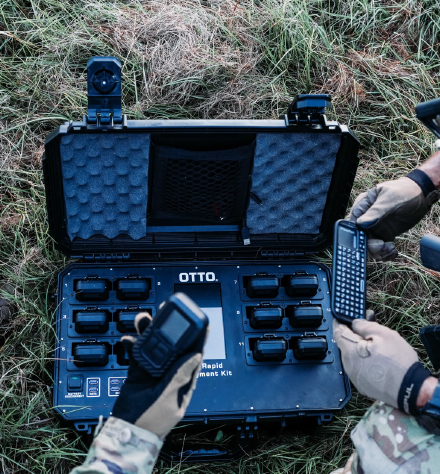
Lynq PRO™ Deployment Kits are available now from OTTO Communications. Visit OTTO at SOFIC Booth 2128, or contact OTTO today for more information or a Lynq PRO™ demonstration via www.otto-comm.com or 847-428-7171.


It’s interesting that they mention the “denied comms” situation because this, even using 20MHz-wide FHSS, is still a radio. Of course, this thing has the advantage of not being tied to a mobile network. However, it still exists within a frequency range used for mobile networks across the world, so RF noise generators that inevitably affect it in addition to other things are readily available even to civilian consumers and might be in use against other communication channels. Seeing those digital bursts on a sub-$200 panoramic SDR isn’t quite impossible either, so if it’s not a surprise – you can’t hide it. It would also be curious to see an antenna because IoT devices like Digi Xbee modules that have exactly the same RF profile need something substantial to pump out 1W and actually reach the 30-mile range outdoors instead of just heating itself.